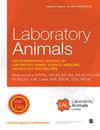求助PDF
{"title":"Comparing United States and European Union academic animal programs: Organization, operation, and services offered.","authors":"Patricia Preisig, James D Macy, Jann Hau","doi":"10.1177/00236772231168925","DOIUrl":null,"url":null,"abstract":"<p><p>The Yale Animal Resource Cost and Benchmarking survey<sup>©</sup>, conducted in US academic Animal Research/Resource Centers (ARC), was modified to capture similar thematic information in European Union (EU; including the non-EU countries Switzerland and the UK) academic ARCs, which are members of the League of European Research Universities (LERU). Participating institutions came from Denmark, England, Finland, France, Germany, Ireland, Italy, Netherlands, Scotland, Spain, and Switzerland. Survey data analysis suggests that: (a) in LERU programs, it is common to have more than one ARC under the umbrella of a single institution with organizational \"lumping\" of the financial, regulatory, and/or operational tasks under one administrative unit; (b) accreditation by an outside agency (e.g., the Association for the Assessment and Accreditation of Laboratory Animal Care) is more common in US than LERU ARCs; (c) LERU ARCs are responsible for murine breeding, which contrasts with US ARCs, where ∼40% of rodent breeding is managed by researchers; (d) cryopreservation is the most frequently requested fee-for-service offering among LERU participants (75% of participants) compared to 30% of US participants; (e) like US programs, almost all LERU programs have mice and rats, but fewer LERU programs have nonhuman primates (NHPs), and none have dogs on census; (f) LERU ARCs have about an equal amount of vivarium housing and procedure space, while US facilities have twice as much housing as procedure space; (g) a higher percentage of LERU colonies are free of <i>Helicobacter</i> and murine norovirus compared to US colonies; and (h) more LERU ARCs used environmental microbiologic monitoring of rodent colonies compared to US programs.</p>","PeriodicalId":18013,"journal":{"name":"Laboratory Animals","volume":" ","pages":"149-159"},"PeriodicalIF":1.3000,"publicationDate":"2024-04-01","publicationTypes":"Journal Article","fieldsOfStudy":null,"isOpenAccess":false,"openAccessPdf":"","citationCount":"0","resultStr":null,"platform":"Semanticscholar","paperid":null,"PeriodicalName":"Laboratory Animals","FirstCategoryId":"3","ListUrlMain":"https://doi.org/10.1177/00236772231168925","RegionNum":4,"RegionCategory":"农林科学","ArticlePicture":[],"TitleCN":null,"AbstractTextCN":null,"PMCID":null,"EPubDate":"2023/9/20 0:00:00","PubModel":"Epub","JCR":"Q2","JCRName":"VETERINARY SCIENCES","Score":null,"Total":0}
引用次数: 0
引用
批量引用
Abstract
The Yale Animal Resource Cost and Benchmarking survey© , conducted in US academic Animal Research/Resource Centers (ARC), was modified to capture similar thematic information in European Union (EU; including the non-EU countries Switzerland and the UK) academic ARCs, which are members of the League of European Research Universities (LERU). Participating institutions came from Denmark, England, Finland, France, Germany, Ireland, Italy, Netherlands, Scotland, Spain, and Switzerland. Survey data analysis suggests that: (a) in LERU programs, it is common to have more than one ARC under the umbrella of a single institution with organizational "lumping" of the financial, regulatory, and/or operational tasks under one administrative unit; (b) accreditation by an outside agency (e.g., the Association for the Assessment and Accreditation of Laboratory Animal Care) is more common in US than LERU ARCs; (c) LERU ARCs are responsible for murine breeding, which contrasts with US ARCs, where ∼40% of rodent breeding is managed by researchers; (d) cryopreservation is the most frequently requested fee-for-service offering among LERU participants (75% of participants) compared to 30% of US participants; (e) like US programs, almost all LERU programs have mice and rats, but fewer LERU programs have nonhuman primates (NHPs), and none have dogs on census; (f) LERU ARCs have about an equal amount of vivarium housing and procedure space, while US facilities have twice as much housing as procedure space; (g) a higher percentage of LERU colonies are free of Helicobacter and murine norovirus compared to US colonies; and (h) more LERU ARCs used environmental microbiologic monitoring of rodent colonies compared to US programs.
比较美国和欧盟学术动物项目:组织、运作和提供的服务。
在美国学术动物研究/资源中心(ARC)进行的耶鲁大学动物资源成本和基准调查©进行了修改,以获取欧盟(EU;包括非欧盟国家瑞士和英国)学术ARC的类似主题信息,这些学术ARC是欧洲研究型大学联盟(LERU)的成员。参与机构来自丹麦、英国、芬兰、法国、德国、爱尔兰、意大利、荷兰、苏格兰、西班牙和瑞士。调查数据分析表明:(a)在LERU项目中,通常在一个机构的保护伞下有一个以上的ARC,将财务、监管和/或运营任务组织“集中”在一个行政单位下;(b) 由外部机构(如实验动物护理评估和认证协会)进行的认证在美国比LERU ARC更常见;(c) LERU ARC负责鼠的繁殖,这与美国ARC形成了鲜明对比,美国ARC 40%的啮齿动物繁殖由研究人员管理;(d) 冷冻保存是LERU参与者(75%的参与者)中最常要求的服务费用,而美国参与者的这一比例为30%;(e) 与美国的项目一样,几乎所有的LERU项目都有老鼠,但很少有LERU项目有非人类灵长类动物(NHP),也没有一个项目在人口普查中有狗;(f) LERU ARC拥有大约相等数量的动物饲养室住房和手术空间,而美国设施的住房是手术空间的两倍;(g) 与美国菌落相比,LERU菌落中不含幽门螺杆菌和鼠诺如病毒的百分比更高;和(h)与美国项目相比,更多的LERU ARC使用啮齿动物群落的环境微生物监测。
本文章由计算机程序翻译,如有差异,请以英文原文为准。


